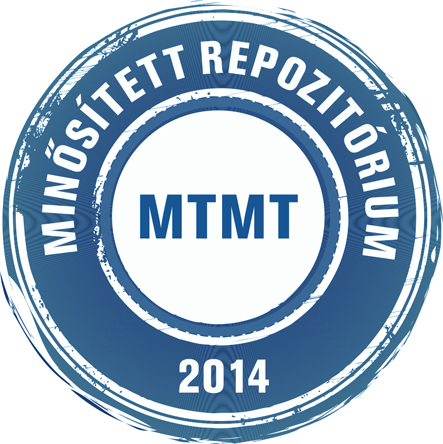Lantay Gyula
Az elidegenítő hatás megjelenése a toldalékolásban magyar anyanyelvű nyelvhasználók körében. Az általános birtoklásjelölő morféma és a tárgyrag viselkedése idegen eredetű tövekhez történő kapcsolásakor.
Doktori értekezés, Szegedi Tudományegyetem (2000-).
(2023)
|
PDF
(disszertáció)
Download (1MB) |
|
|
PDF
(tézisfüzet)
Download (245kB) |
|
|
PDF
(melléklet)
Download (81kB) |
Magyar nyelvű absztrakt
A magyar anyanyelvű nyelvhasználók amikor idegen, vagy idegen eredetű szavakkal találkoznak, a szövegkörnyezettől függően sok esetben kénytelenek magyar toldalékkal ellátni e töveket. Ez gyakran azt eredményezi, hogy jelöltebb alakok jönnek létre. Dolgozatomban két ilyen jelenséggel foglalkozom: az általános birtoklásjelölő morféma viselkedésével (elsősorban a magyar anyanyelvű számítógépes játékosok nyelvhasználatában), amikor az szibilánsra végződő idegen eredetű tövekhez járul, és a magyar tárgyrag viselkedésével, pontosabban a kötőhangzó megjelenése és meg nem jelenése közötti ingadozással, amikor a tárgyrag erősen jelölt, kettős vagy hármas mássalhangzó-kapcsolatra végződő idegen eredetű tövekhez járul. Dolgozatom elsődleges célja az említett két jelenség klasszikus optimalitáselméleti keretben történő megközelítése, szemléltetése a vonatkozó tételek részletes ismertetése után. A kutatott jelenségek klasszikus OT-ben történő szemléltetése mellett indokoltnak tartottam egy modernebb elméleti keret, az ún. maximum entrópia modell (maxent) rövid ismertetését, és alkalmazását az elméleti keret használatának megkönnyítésére írt Java programmal, a MaxEnt Grammar Toollal. E program segítségével kiszámítottam a versengő alakok maxent értékét.
Absztrakt (kivonat) idegen nyelven
The dissertation has two main aims. 1. To examine nouns of foreign origin with sibilants at the end and the way they behave when Hungarian native speakers inflect them with the General Possession Marker (GPM) morpheme. Unlike in the case of other sibilant-final Hungarian nouns (identified by speakers as Hungarian nouns), some Hungarian native speakers (one of whose hobbies is to play video games in English) add a j-initial allomorph of the GPM morpheme to these nouns, which is a highly unexpected solution. 2. To examine nouns of foreign origin with strongly marked consonant clusters at the end and their behavior when Hungarian native speakers inflect them with the accusative ending. A significant part of Hungarian native speakers add the accusative ending to these nouns without a linking vowel (cf. native taps > tapsot [tɒpʃ] > [tɒpʃot] ‘applause, nom. > acc.’ vs. foreign Hanks > Hankst, nom. > acc.). My hypothesis is that Hungarian native speakers use an alienation method (resulting in an increase in transparency) when they produce these unexpected, marked forms. The analysis presented in the dissertation uses the framework of classical Optimality Theory. Within the OT framework, I demonstrated the process of this alienation method. With OT, it is simple to handle interpersonal variations. Following the demonstration within the classical OT framework, I repeat the demonstration using the Maxent Grammar Tool of the Maximum Entropy Model to determine the maxent value of the rival candidates, to better account for the persumably intrapersonal variations.
| Mű típusa: | Disszertáció (Doktori értekezés) |
|---|---|
| Publikációban használt név: | Lantay Gyula |
| Témavezető(k): | Témavezető neve Beosztás, tudományos fokozat, intézmény MTMT szerző azonosító Zsigri Gyula egyetemi docens, PhD, SZTE BTK Magyar Nyelvészeti Tanszék 10010493 |
| Szakterület: | 06. Bölcsészettudományok > 06.02. Nyelvek és irodalom > 06.02.06. Nyelvészet > 06.02.06.01. Formális, kognitív, funkcionális és számítógépes nyelvészet |
| Doktori iskola: | Nyelvtudományi Doktori Iskola |
| Tudományterület / tudományág: | Bölcsészettudományok > Nyelvtudományok |
| Nyelv: | magyar |
| Védés dátuma: | 2023. június 19. |
| Kulcsszavak: | ÁBJ morféma, tárgyrag, fonológia, morfofonológia, optimalitáselmélet, maxent, szótagszerkezet |
| EPrint azonosító (ID): | 11557 |
| A feltöltés ideje: | 2022. dec. 12. 13:50 |
| Utolsó módosítás: | 2023. okt. 20. 09:58 |
| Raktári szám: | B 7263 |
| URI: | https://doktori.bibl.u-szeged.hu/id/eprint/11557 |
| Védés állapota: | nem védett (Nem idézhető amíg nem kap DOI számot.) |
Actions (login required)
 |
Tétel nézet |






